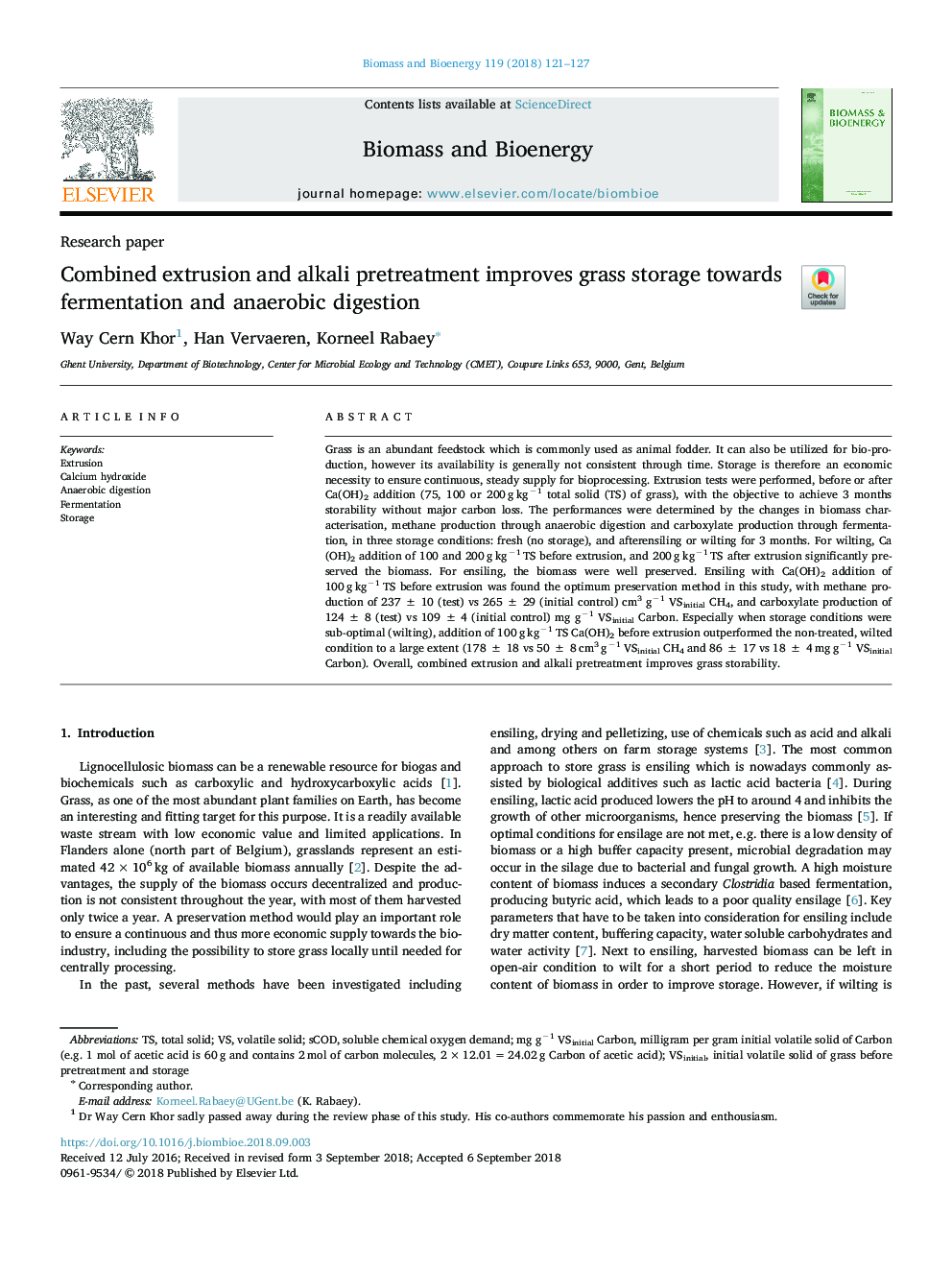| Article ID | Journal | Published Year | Pages | File Type |
|---|---|---|---|---|
| 11027905 | Biomass and Bioenergy | 2018 | 7 Pages |
Abstract
Grass is an abundant feedstock which is commonly used as animal fodder. It can also be utilized for bio-production, however its availability is generally not consistent through time. Storage is therefore an economic necessity to ensure continuous, steady supply for bioprocessing. Extrusion tests were performed, before or after Ca(OH)2 addition (75, 100 or 200â¯gâ¯kgâ1 total solid (TS) of grass), with the objective to achieve 3 months storability without major carbon loss. The performances were determined by the changes in biomass characterisation, methane production through anaerobic digestion and carboxylate production through fermentation, in three storage conditions: fresh (no storage), and afterensiling or wilting for 3 months. For wilting, Ca(OH)2 addition of 100 and 200â¯gâ¯kgâ1â¯TS before extrusion, and 200â¯gâ¯kgâ1â¯TS after extrusion significantly preserved the biomass. For ensiling, the biomass were well preserved. Ensiling with Ca(OH)2 addition of 100â¯gâ¯kgâ1â¯TS before extrusion was found the optimum preservation method in this study, with methane production of 237â¯Â±â¯10 (test) vs 265â¯Â±â¯29 (initial control) cm3 gâ1 VSinitial CH4, and carboxylate production of 124â¯Â±â¯8 (test) vs 109â¯Â±â¯4 (initial control) mg gâ1 VSinitial Carbon. Especially when storage conditions were sub-optimal (wilting), addition of 100â¯gâ¯kgâ1â¯TS Ca(OH)2 before extrusion outperformed the non-treated, wilted condition to a large extent (178â¯Â±â¯18 vs 50â¯Â±â¯8â¯cm3â¯gâ1 VSinitial CH4 and 86â¯Â±â¯17 vs 18â¯Â±â¯4â¯mgâ¯gâ1 VSinitial Carbon). Overall, combined extrusion and alkali pretreatment improves grass storability.
Keywords
Related Topics
Physical Sciences and Engineering
Chemical Engineering
Process Chemistry and Technology
Authors
Way Cern Khor, Han Vervaeren, Korneel Rabaey,
